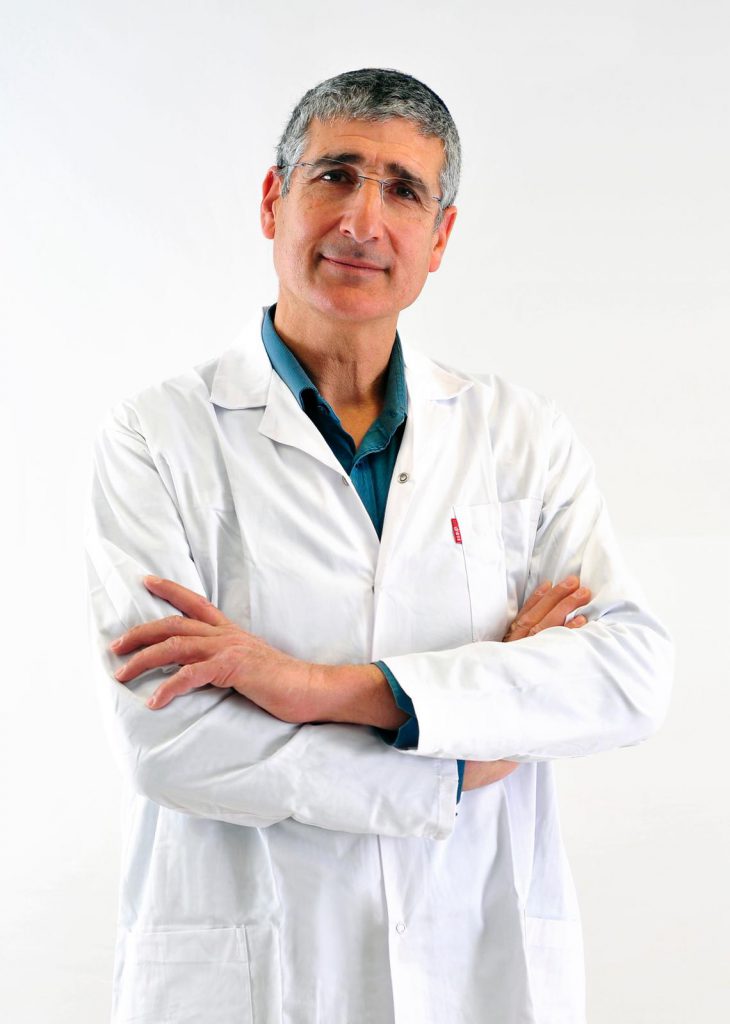Dr. Eyal Attias was born in 1961. He is a graduate of the 11th class of Ben Gurion University’s medical school in Be’er Sheba. He is a specialist of general surgery after an internship at the Sha’arey Zedek Hospital in Jerusalem and at the Meir Hospital in Kfar Saba.
Between the years 2000-2004 he directed the trauma ward at the Meir Hospital in Kfar Saba.
In 2004, Dr Attias established the first department for hard-to-treat wounds & Diabetic legs in Mayanei HaYeshua Medical Center, and managed it until 2006.
Throughout his different positions he has treated highly complicated medical conditions, including serious cases of diabetes. Sometimes these patients do not have a preventive and rehabilitative medical solution except for limb amputation that may lead to their death. The understanding that these severe cases do not have a real treatment method that can improve their condition has led Dr. Eyal Attias to open his clinics in 2004 and continue their operation to this day. In the clinics Dr. Attias offers various solutions, the main one being the Oxypro Technology which contributes among other things to the recovery and rehabilitation of these serious cases, by improving the supply of oxygen to the blood and various body systems.
About Oxypro technology – and the virtues of using ozone gas, see the articles below which were published in the most important journals of the medical world by Dr. Eyal Attias and senior colleagues.
A message from Dr. Eyal Attias:
Our guiding principle in treating patients is to always remain positive. You begin with a smile and with a warm welcome, hoping and believing that help can always be provided. The patient can cope and can improve their condition, and we will stand by them to instruct, offer advice, support and treat. This is true for healthy people who wish to improve their quality of life (rejuvenation / Anti-aging) and definitely for difficult cases facing serious diseases.
Many patients contacting our clinics suffer from vascular diseases. Most of them are diabetics dealing with strokes, heart attacks, cardiac insufficiency, renal insufficiency and peripheral vascular diseases reflected in leg sores. An additional group of our patients deal with extensive malignant diseases and inflammatory diseases of the joints and intestines. All of these are different complex conditions but they share a lot in common.
Let’s take as an example patients coping with an extensive malignant disease. Those who have not responded well to such treatments as chemotherapy, surgery, radiation or other modern treatments and classified under the heading of “incurable patients”. Under this classification they are provided with palliative care that extensively utilizes narcotics and painkillers in unlimited amounts in order to alleviate the patient’s suffering until their last breath. I, however, see things differently.
I maintain that even when coping with a serious terminal illness we should and must view it as a rehabilitative process. This means that we define and introduce to ourselves, to the patient and to their family a rehabilitative treatment plan that assists in providing the patient with the best possible quality of life. By the very use of this new definition and by refusing to give up, even at such a serious stage of the disease, considerable improvement can be achieved.
The patient is forced to cope with numerous difficulties: pain, weakness, limited mobility and more. If he is able to remain alert despite this hardship, he can fight the disease. Instead of getting into the routine of the “terminal patient” definition, you set a daily objective for the improvement you want to achieve from the point the patient is at: get the patient to open their eyes again, to smile, eat, drive, to again perform all of the daily activities that seem trivial to a healthy person but are a great achievement to our patient and their family. This approach, striving to discover at any given moment where the patient’s condition can be improved, is a proactive positive approach that can lead, with persistence, to exceptional results and to an improvement in the patient’s quality of life, whatever they are dealing with.


In an article we published in the “Pain Clinic” journal in 2002 – we showed that Ozone treatment is very effective in treating pain. Patients reported significant pain relief, were able to quit many pain medications, and were even weaned from regular morphine use.
Moreover, in an article published in the JACC journal in 2004, within 75 patients with heart failure, half of whom were treated with ozone, a significant decrease in mortality and signs of heart failure was observed, compared to those who were not treated with ozone.
Also, n an article we published in the Journal of Cardiac Surgery in 2007 – we showed that ozone treatment prevents ischemia and reperfusion damage in the heart, in the model of an isolated rat heart.